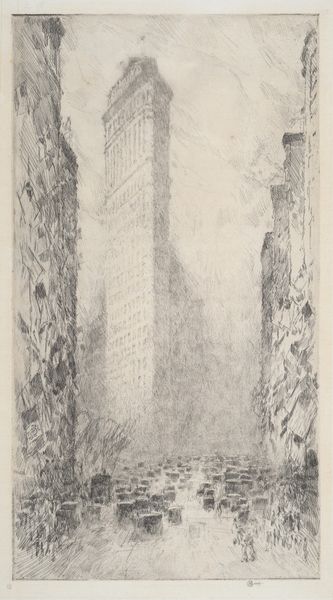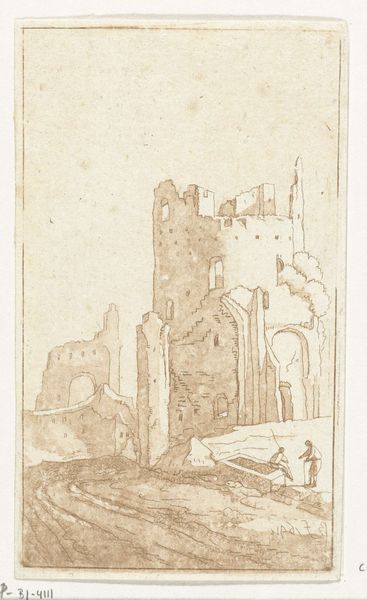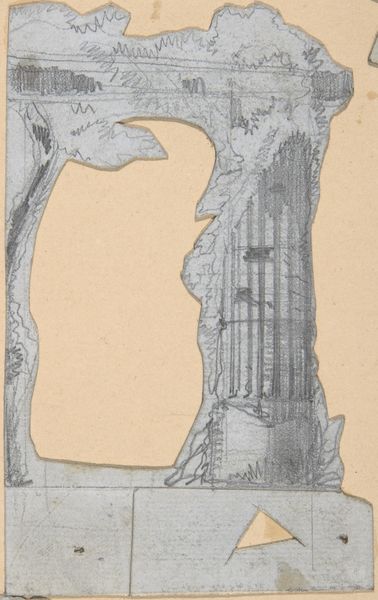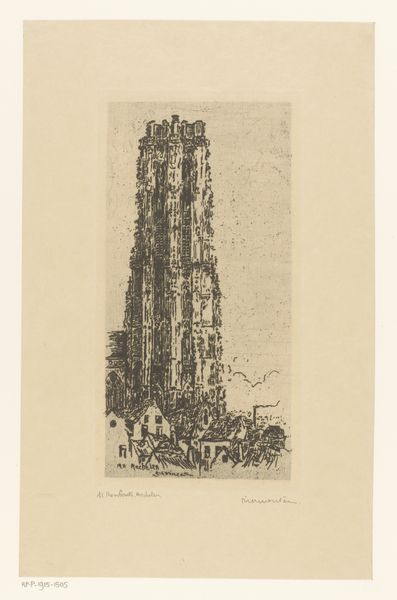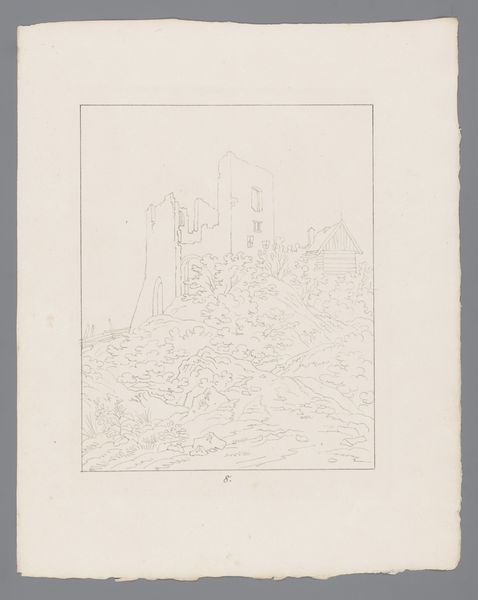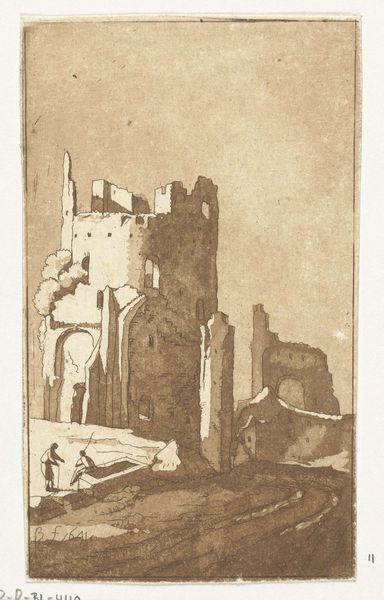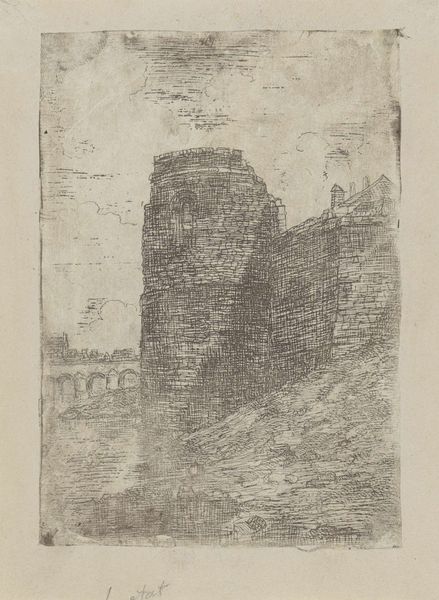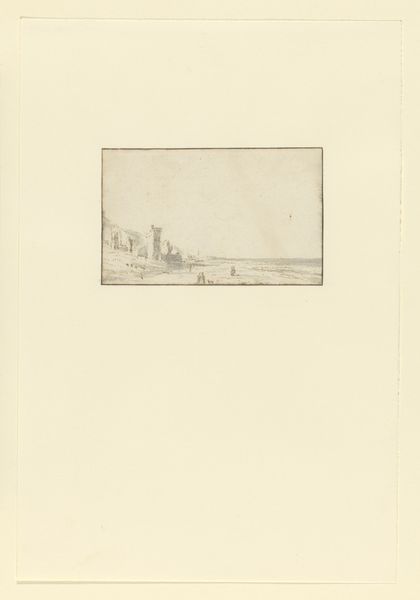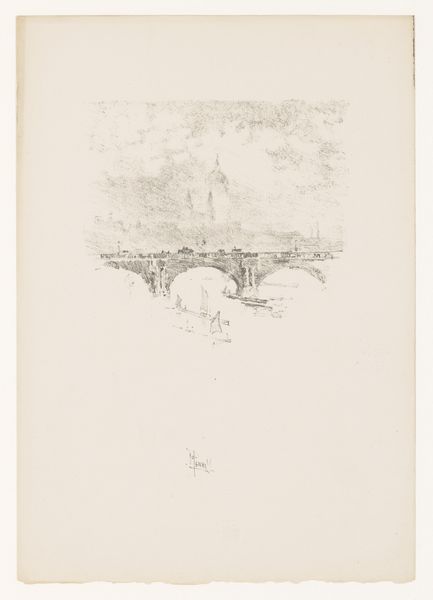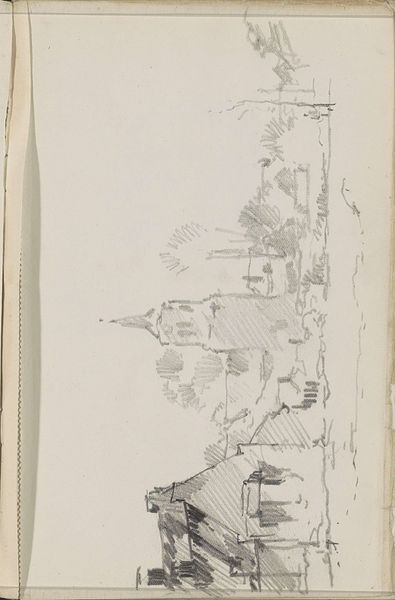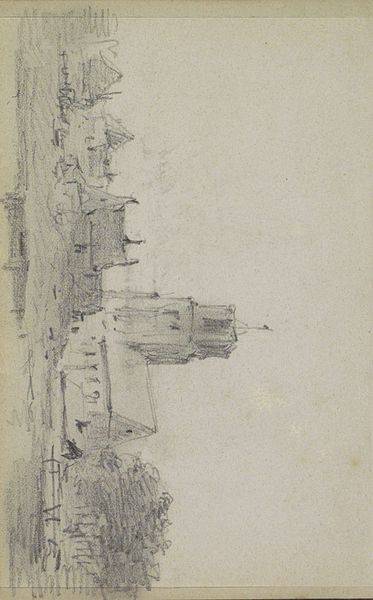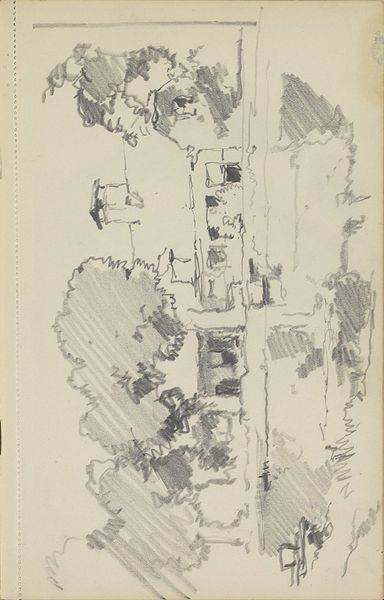
Dimensions: height 235 mm, width 170 mm
Copyright: Rijks Museum: Open Domain
Curator: Let’s turn our attention to this intriguing piece, "Ruïne van toren langs de grote weg tussen Terracina en Fondi," created by Louis Ducros in 1778. Editor: Oh, wow. It's hauntingly beautiful. Like a faded postcard from a forgotten era. So minimal, just a towering ruin against the barest landscape, I can almost feel the stillness of the scene, despite its obvious decay. Curator: Indeed. Ducros, known for his landscape artistry, here uses ink and watercolor to depict this crumbling tower. What’s striking is how this scene engages with ideas around the picturesque and the sublime, very much in vogue at the time. Editor: The ruin itself definitely hits the sublime notes! I mean, look at that thing teetering towards the sky—all ragged edges and vacant windows. And those figures at the base, almost swallowed up by its looming shadow. Curator: They certainly contribute to the drama, serving as both witnesses to and measures of the tower's immensity and its slow dissolution, raising complex questions of temporality, power and nature. Consider how gender roles might also be implicated here, with women more rooted to the earth. Editor: Yes, yes. It's as if the crumbling tower represents something...lost. That romantic notion of the fragility of civilization, and even human achievement. You see those travellers casually making their way past the rubble...maybe progress marches on! Leaving the broken fragments of empires in the dust. A tad depressing. Curator: Perhaps, but consider also the subversive element. By focusing on ruins, Ducros may be implicitly critiquing the existing power structures. The fall of these structures could serve as a symbolic gesture toward revolutionary potential. It questions the very notion of permanence, in ways that intersect with debates of identity and selfhood that also haunted that era. Editor: Food for thought. Looking at the colour palette, how delicate this scene appears: grey, ochre, umber—it mirrors those ruins somehow. Makes me want to get lost on a backroad myself! Curator: Precisely, and thinking of our journey through history, it resonates, I feel, in so many relevant ways. We can think about colonialism, imperialism, so much about the violence enacted across temporal zones. Editor: True that! I'll wander off pondering those things on my next travel for sure.
Comments
No comments
Be the first to comment and join the conversation on the ultimate creative platform.
